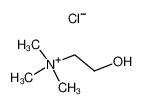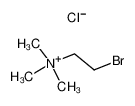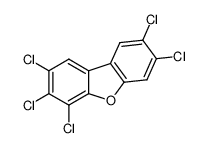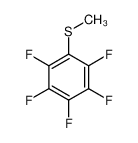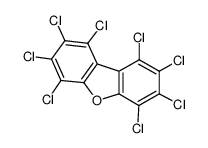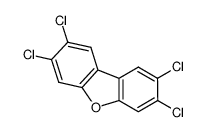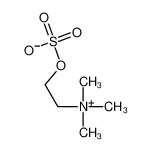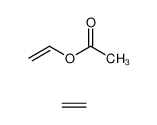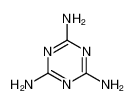| Product name | chlormequat chloride |
|---|
| Product number | - |
|---|---|
| Other names | CEKU-CCC |
| Identified uses | For industry use only. Growth regulator |
|---|---|
| Uses advised against | no data available |
| Company | MOLBASE (Shanghai) Biotechnology Co., Ltd. |
|---|---|
| Address | Floor 4 & 5, Building 12, No. 1001 North Qinzhou Road, Xuhui District, Shanghai, China |
| Telephone | +86(21)64956998 |
| Fax | +86(21)54365166 |
| Emergency phone number | +86-400-6021-666 |
|---|---|
| Service hours | Monday to Friday, 9am-5pm (Standard time zone: UTC/GMT +8 hours). |
Acute toxicity - Oral, Category 4
Acute toxicity - Dermal, Category 4
2.2 GHS label elements, including precautionary statements| Pictogram(s) | 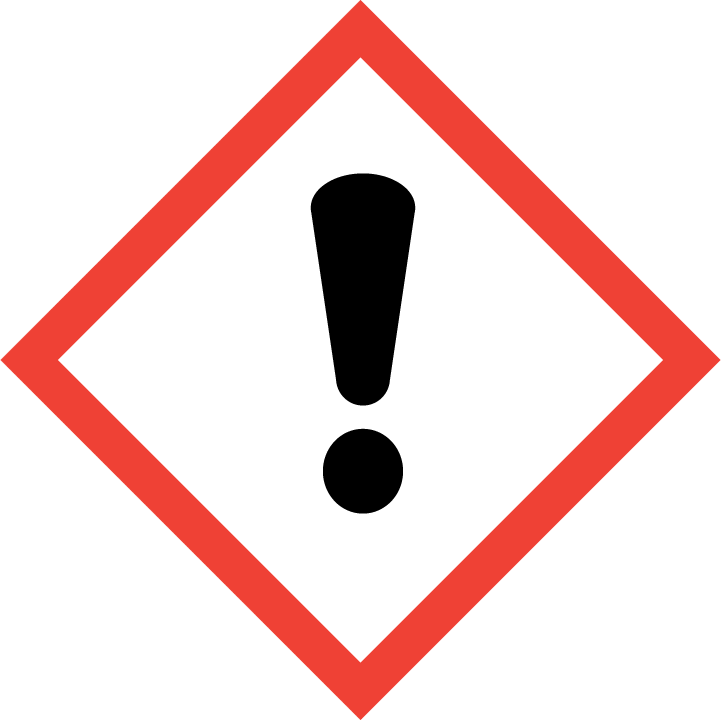 |
|---|---|
| Signal word | Warning |
| Hazard statement(s) | H302 Harmful if swallowed H312 Harmful in contact with skin |
| Precautionary statement(s) | |
| Prevention | P264 Wash ... thoroughly after handling. P270 Do not eat, drink or smoke when using this product. P280 Wear protective gloves/protective clothing/eye protection/face protection. |
| Response | P301+P312 IF SWALLOWED: Call a POISON CENTER/doctor/…if you feel unwell. P330 Rinse mouth. P302+P352 IF ON SKIN: Wash with plenty of water/... P312 Call a POISON CENTER/doctor/…if you feel unwell. P321 Specific treatment (see ... on this label). P362+P364 Take off contaminated clothing and wash it before reuse. |
| Storage | none |
| Disposal | P501 Dispose of contents/container to ... |
none
3.Composition/information on ingredients 3.1 Substances| Chemical name | Common names and synonyms | CAS number | EC number | Concentration |
|---|---|---|---|---|
| chlormequat chloride | chlormequat chloride | 999-81-5 | none | 100% |
Consult a physician. Show this safety data sheet to the doctor in attendance.
If inhaledFresh air, rest.
In case of skin contactRemove contaminated clothes. Rinse and then wash skin with water and soap. Refer for medical attention .
In case of eye contactFirst rinse with plenty of water for several minutes (remove contact lenses if easily possible), then refer for medical attention.
If swallowedRinse mouth. Refer for medical attention .
4.2 Most important symptoms/effects, acute and delayedInhalation of spray and prolonged or repeated contact with skin should be avoided. (EPA, 1998)
4.3 Indication of immediate medical attention and special treatment needed, if necessaryImmediate first aid: Ensure that adequate decontamination has been carried out. If patient is not breathing, start artificial respiration, preferably with a demand valve resuscitator, bag-valve-mask device, or pocket mask, as trained. Perform CPR if necessary. Immediately flush contaminated eyes with gently flowing water. Do not induce vomiting. If vomiting occurs, lean patient forward or place on the left side (head-down position, if possible) to maintain an open airway and prevent aspiration. Keep patient quiet and maintain normal body temperature. Obtain medical attention. /Poisons A and B/
5.Fire-fighting measures 5.1 Extinguishing media Suitable extinguishing media(Non-Specific -- Poisonous Solid, n.o.s.) For small fires, use dry chemical, carbon dioxide, water spray, or foam. For large fires, use water spray, fog, or foam. (EPA, 1998)
5.2 Specific hazards arising from the chemicalFlash point data for this chemical are not available; however, it is probably combustible.
5.3 Special protective actions for fire-fightersWear self-contained breathing apparatus for firefighting if necessary.
6.Accidental release measures 6.1 Personal precautions, protective equipment and emergency proceduresUse personal protective equipment. Avoid dust formation. Avoid breathing vapours, mist or gas. Ensure adequate ventilation. Evacuate personnel to safe areas. Avoid breathing dust. For personal protection see section 8.
6.2 Environmental precautionsPersonal protection: particulate filter respirator adapted to the airborne concentration of the substance. Do NOT let this chemical enter the environment. Sweep spilled substance into covered containers. Carefully collect remainder. Then store and dispose of according to local regulations.
6.3 Methods and materials for containment and cleaning upSweep spilled substance into containers. Carefully collect remainder, then remove to safe place. Do NOT let this chemical enter the environment. (Extra personal protection: P2 filter respirator for harmful particles).
7.Handling and storage 7.1 Precautions for safe handlingAvoid contact with skin and eyes. Avoid formation of dust and aerosols. Avoid exposure - obtain special instructions before use.Provide appropriate exhaust ventilation at places where dust is formed. For precautions see section 2.2.
7.2 Conditions for safe storage, including any incompatibilitiesDry. Keep in a well-ventilated room. Store in glass, high-density plastic, rubber or epoxy resin-protected metal containers.Pesticide Storage: Store in original container. DO NOT store below freezing temperatures.
8.Exposure controls/personal protection 8.1 Control parameters Occupational Exposure limit valuesno data available
Biological limit valuesno data available
8.2 Appropriate engineering controlsHandle in accordance with good industrial hygiene and safety practice. Wash hands before breaks and at the end of workday.
8.3 Individual protection measures, such as personal protective equipment (PPE) Eye/face protectionSafety glasses with side-shields conforming to EN166. Use equipment for eye protection tested and approved under appropriate government standards such as NIOSH (US) or EN 166(EU).
Skin protectionWear impervious clothing. The type of protective equipment must be selected according to the concentration and amount of the dangerous substance at the specific workplace. Handle with gloves. Gloves must be inspected prior to use. Use proper glove removal technique(without touching glove's outer surface) to avoid skin contact with this product. Dispose of contaminated gloves after use in accordance with applicable laws and good laboratory practices. Wash and dry hands. The selected protective gloves have to satisfy the specifications of EU Directive 89/686/EEC and the standard EN 374 derived from it.
Respiratory protectionWear dust mask when handling large quantities.
Thermal hazardsno data available
9.Physical and chemical properties| Physical state | White crystals with a fishlike odor. |
|---|---|
| Colour | White cyrstalline solid |
| Odour | TYPICAL AMINE ODOR |
| Melting point/ freezing point | 117°C(lit.) |
| Boiling point or initial boiling point and boiling range | 175°C/27mmHg(lit.) |
| Flammability | Not combustible. Gives off irritating or toxic fumes (or gases) in a fire. |
| Lower and upper explosion limit / flammability limit | no data available |
| Flash point | 46°C(lit.) |
| Auto-ignition temperature | no data available |
| Decomposition temperature | 245°C |
| pH | pH = 5.14 |
| Kinematic viscosity | no data available |
| Solubility | greater than or equal to 100 mg/mL at 22.78°C |
| Partition coefficient n-octanol/water (log value) | log Kow = -3.80 |
| Vapour pressure | 7.5e-08 mm Hg at 20°C |
| Density and/or relative density | 1.14 to 1.15 g/mL at 20°C |
| Relative vapour density | no data available |
| Particle characteristics | no data available |
no data available
10.2 Chemical stabilityStable up to 50°C for at least 2 years.
10.3 Possibility of hazardous reactionsNoncombustible solid.CHLORMEQUAT CHLORIDE is incompatible with strong oxidizing agents. It is corrosive to unprotected metals. Quaternary ammonium salts often serve as catalysts in reactions. They are incompatible with many strong oxidizers and reducing agents, such as metal hydrides, alkali/active metals, and organometallics.
10.4 Conditions to avoidno data available
10.5 Incompatible materialsShould not be combined with dinoseb, cyanazine, or other contact herbicides.
10.6 Hazardous decomposition productsThe substance decomposes on heating producing toxic and corrosive fumes including nitrogen oxides, hydrogen chloride. The substance decomposes on heating with strong aqueous alkali solutions producing trimethylamine and other gaseous products.
11.Toxicological information Acute toxicity- Oral: LD50 Rat oral 330-750 mg/kg.
- Inhalation: LC50 Rat inhalation >5.2 mg/l/4 hr
- Dermal: LD50 Rat percutaneous >4000 mg/kg
no data available
Serious eye damage/irritationno data available
Respiratory or skin sensitizationno data available
Germ cell mutagenicityno data available
Carcinogenicityno data available
Reproductive toxicityno data available
STOT-single exposureno data available
STOT-repeated exposureno data available
Aspiration hazardno data available
12.Ecological information 12.1 Toxicity- Toxicity to fish: LC50; Species: Lepomis macrochirus (Bluegill, weight 1.5 g); Conditions: freshwater, static, 17°C, pH 7.4, hardness 272 mg/L CaCO3; Concentration: >100 mg/L for 24 hr /98.1% purity, technical material
- Toxicity to daphnia and other aquatic invertebrates: EC50; Species: Daphnia magna (Water flea, age 6-24 hr); Conditions: freshwater, static; Concentration: 16700 ug/L for 48 hr (95% confidence interval: 14900-19200 ug/L); Effect: intoxication, immobilization /100% purity
- Toxicity to algae: no data available
- Toxicity to microorganisms: no data available
AEROBIC: In soil, chlormequat chloride is rapidly degraded by microbial activity and has no influence on soil microflora or fauna(1). Half-lives in 4 soils were reported as averaging 32 days at 10°C and 1 to 28 days at 22°C(1). Studies with soil microorganisms indicated that chlormequat chloride breakdown occurred through oxidative processes(2). Chlormequat chloride, at an initial concentration of 282 ppm, biodegraded 18% after running a compost operation consisting of poultry and pig manure for 56 days; the high concentration may have retarded degradation(3). Based on analogy to other quaternary ammonium compounds(4), the reduction of biomass or other nutrient materials in natural water may reduce the biodegradation rate of the chlormequat chloride cation and acclimation enhances biodegradation of quaternary ammonium compounds.
12.3 Bioaccumulative potentialAn estimated BCF of 3.2 was calculated for chlormequat chloride(SRC), using a log Kow of -3.80(1) and a regression-derived equation(2). According to a classification scheme(3), this BCF suggests the potential for bioconcentration in aquatic organisms is low(SRC).
12.4 Mobility in soilThe Koc of chlormequat chloride has been reported to be 203(1). According to a classification scheme(2), this Koc value suggests that chlormequat chloride is expected to have moderate mobility in soil. However, this compound exists as a quaternary ammonium cation and cations generally adsorb more strongly to soils containing organic carbon and clay than their neutral counterparts(3). Chlormequat chloride is expected to adsorb strongly to various materials, including suspended solids in wastewater treatment facilities, sediments in rivers and lakes, suspended organics and minerals in natural water systems, clays, proteins, and microorganisms(4-6). Further, adsorption of quaternary ammonium compounds to river sediment occurs primarily by an ion-exchange mechanism(5). Monitoring studies of river water samples from Germany reported that 50% of an alkyltrimethyl quaternary ammonium compound detectable in the water column was associated with suspended solids in the water; the suspended solids in the water comprise a small fraction of the water(7).
12.5 Other adverse effectsno data available
13.Disposal considerations 13.1 Disposal methods ProductThe material can be disposed of by removal to a licensed chemical destruction plant or by controlled incineration with flue gas scrubbing. Do not contaminate water, foodstuffs, feed or seed by storage or disposal. Do not discharge to sewer systems.
Contaminated packagingContainers can be triply rinsed (or equivalent) and offered for recycling or reconditioning. Alternatively, the packaging can be punctured to make it unusable for other purposes and then be disposed of in a sanitary landfill. Controlled incineration with flue gas scrubbing is possible for combustible packaging materials.
14.Transport information 14.1 UN Number| ADR/RID: UN2811 | IMDG: UN2811 | IATA: UN2811 |
| ADR/RID: TOXIC SOLID, ORGANIC, N.O.S. |
| IMDG: TOXIC SOLID, ORGANIC, N.O.S. |
| IATA: TOXIC SOLID, ORGANIC, N.O.S. |
| ADR/RID: 6.1 | IMDG: 6.1 | IATA: 6.1 |
| ADR/RID: III | IMDG: III | IATA: III |
| ADR/RID: no | IMDG: no | IATA: no |
no data available
14.7 Transport in bulk according to Annex II of MARPOL 73/78 and the IBC Codeno data available
15.Regulatory information 15.1 Safety, health and environmental regulations specific for the product in question| Chemical name | Common names and synonyms | CAS number | EC number |
|---|---|---|---|
| chlormequat chloride | chlormequat chloride | 999-81-5 | none |
| European Inventory of Existing Commercial Chemical Substances (EINECS) | Listed. | ||
| EC Inventory | Listed. | ||
| United States Toxic Substances Control Act (TSCA) Inventory | Listed. | ||
| China Catalog of Hazardous chemicals 2015 | Not Listed. | ||
| New Zealand Inventory of Chemicals (NZIoC) | Listed. | ||
| Philippines Inventory of Chemicals and Chemical Substances (PICCS) | Not Listed. | ||
| Vietnam National Chemical Inventory | Not Listed. | ||
| Chinese Chemical Inventory of Existing Chemical Substances (China IECSC) | Listed. | ||
| Creation Date | Aug 12, 2017 |
|---|---|
| Revision Date | Aug 12, 2017 |
- CAS: Chemical Abstracts Service
- ADR: European Agreement concerning the International Carriage of Dangerous Goods by Road
- RID: Regulation concerning the International Carriage of Dangerous Goods by Rail
- IMDG: International Maritime Dangerous Goods
- IATA: International Air Transportation Association
- TWA: Time Weighted Average
- STEL: Short term exposure limit
- LC50: Lethal Concentration 50%
- LD50: Lethal Dose 50%
- EC50: Effective Concentration 50%
- IPCS - The International Chemical Safety Cards (ICSC), website: http://www.ilo.org/dyn/icsc/showcard.home
- HSDB - Hazardous Substances Data Bank, website: https://toxnet.nlm.nih.gov/newtoxnet/hsdb.htm
- IARC - International Agency for Research on Cancer, website: http://www.iarc.fr/
- eChemPortal - The Global Portal to Information on Chemical Substances by OECD, website: http://www.echemportal.org/echemportal/index?pageID=0&request_locale=en
- CAMEO Chemicals, website: http://cameochemicals.noaa.gov/search/simple
- ChemIDplus, website: http://chem.sis.nlm.nih.gov/chemidplus/chemidlite.jsp
- ERG - Emergency Response Guidebook by U.S. Department of Transportation, website: http://www.phmsa.dot.gov/hazmat/library/erg
- Germany GESTIS-database on hazard substance, website: http://www.dguv.de/ifa/gestis/gestis-stoffdatenbank/index-2.jsp
- ECHA - European Chemicals Agency, website: https://echa.europa.eu/






